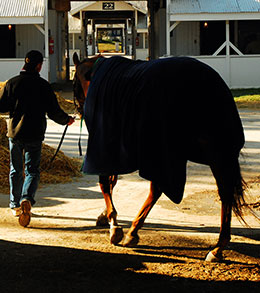- News
- Horse Racing
- Racing Preview
- AQHA Racing Challenge
- Breeding
- Sales
- Quick Stakes Results
- Detail Race Results
- Qualifiers
- Leader Board
- Leading Sires
- Videos
- Auction Leaders
- Q-Racing
Streaming Video

LEXINGTON, KY—FEBRUARY 25, 2021—Multiple polyacrylamide hydrogel (PAHG) products are being marketed for intra-articular use in horses for the treatment of joint pain and lameness caused by conditions ranging from acute synovitis to end-stage osteoarthritis.
Product claims include pain relief of up to 24 months and delayed progression of joint disease. Neither have been substantiated by independent research. Individuals contemplating the use of such products in horses engaged in racing and training should be aware of the following:
- These products are not FDA-approved medications; their safety, efficacy, purity, concentration, and stability have not been evaluated.
- Substances registered as Medical Devices do not have FDA approval.
- These products have not been studied beyond 56 days post-administration to equine joints; the long-term effects of PAHG on joint health are unknown.
- The mechanism of action of PAHG in relieving lameness is unknown; statements related to effects within the joint are speculative.
Per the manufacturers’ websites, case selection criteria for the use of PAHG are poorly defined. The equine joint is a complex structure that can sustain injury or undergo degenerative disease in multiple ways.
There is no one-size-fits-all response to treatment of lameness that is determined to be localized to a specific joint. It is important to remember that lameness is a clinical sign and not a disease. A treatment plan should be formulated after the underlying cause of the lameness is thoroughly investigated.
Without an appropriate physical examination and relevant diagnostic modalities, treatments directed at relieving lameness have the potential to mask musculoskeletal disease thus putting the affected horse at increased risk of more serious injury or death.
In What is the evidence of Hyaluronic Acid and Hydrogel in Intra-articular Therapy in Equines? A Systematic Literature review*, the authors deSouza et al., note, “No study was included showing any clinical outcome in disease[d] synovial tissues of PAHG which still lacks further evidence to support its choice by critical professionals.”
For these reasons, the RMTC recommends extreme caution when considering the use of these products in horses engaged in racing and training.
*Journal of Equine Veterinary Science 86 (2020) 102909

 Newsletters
Newsletters Facebook
Facebook